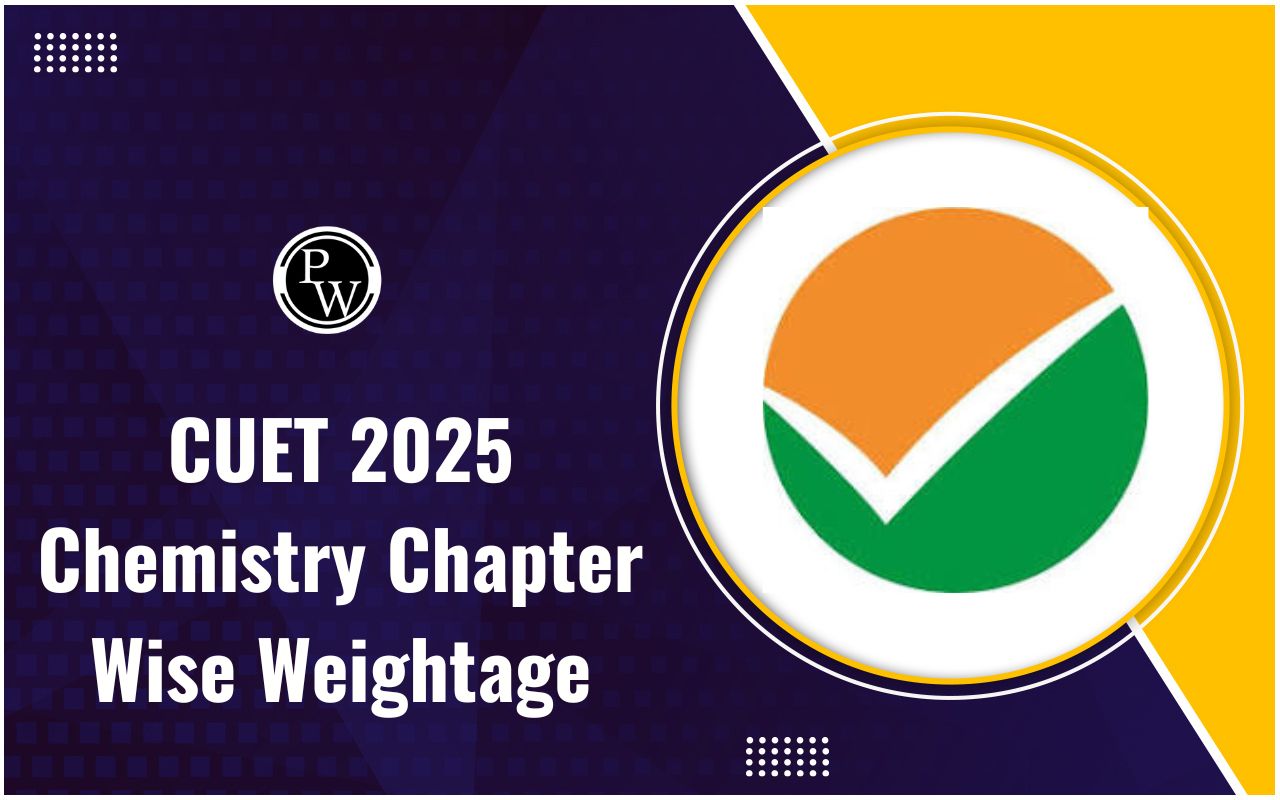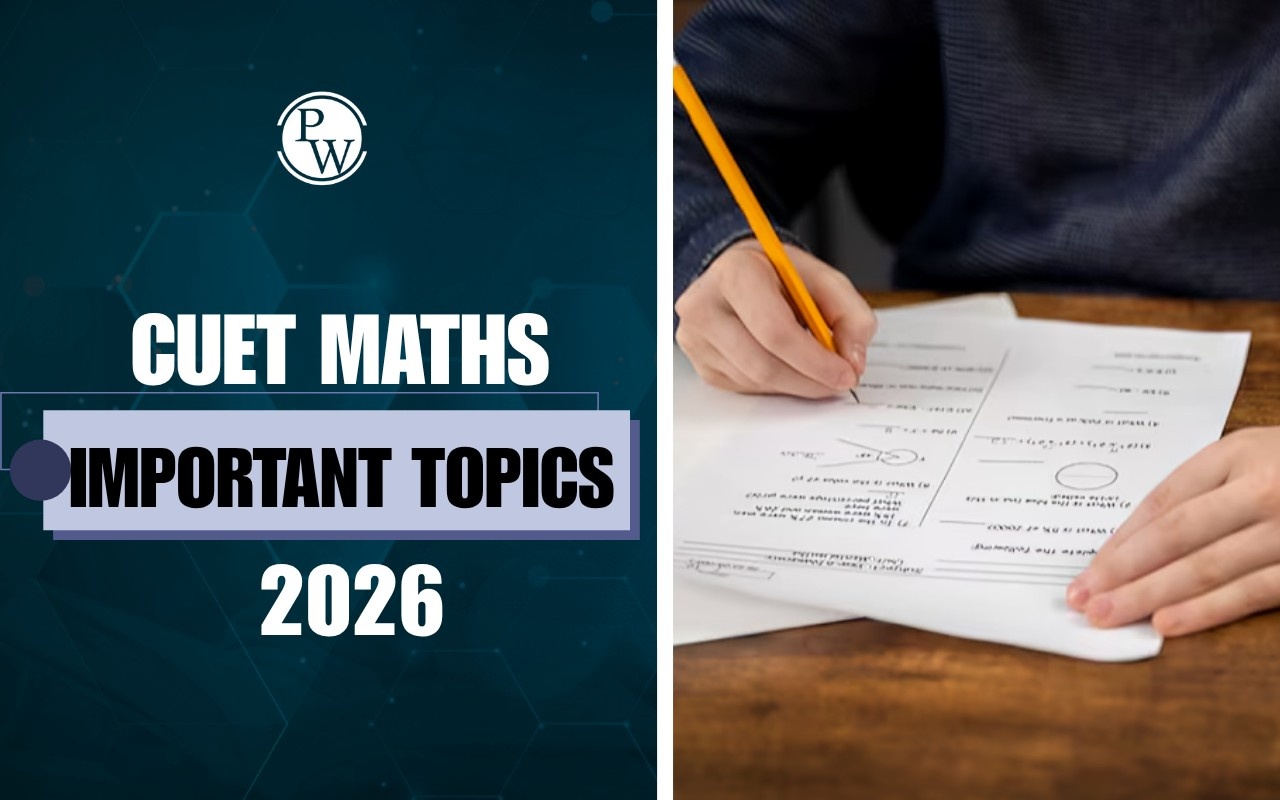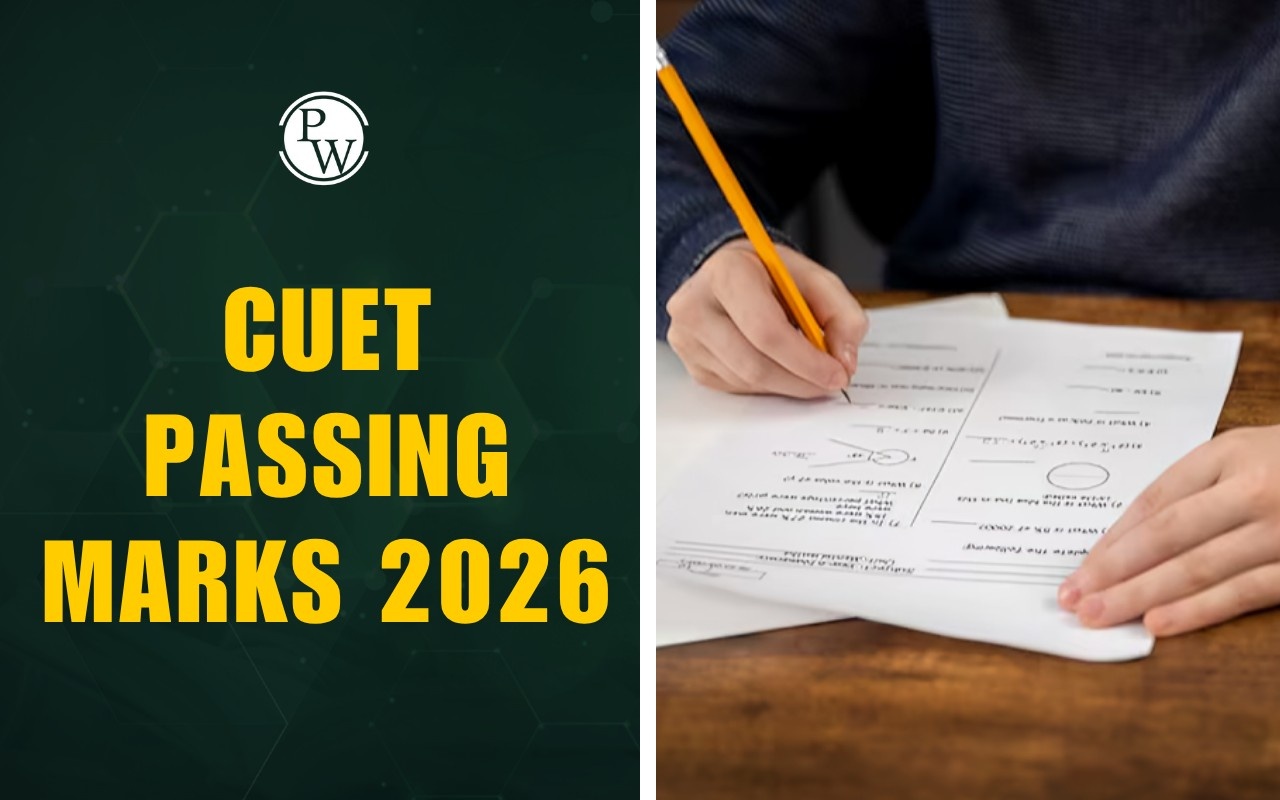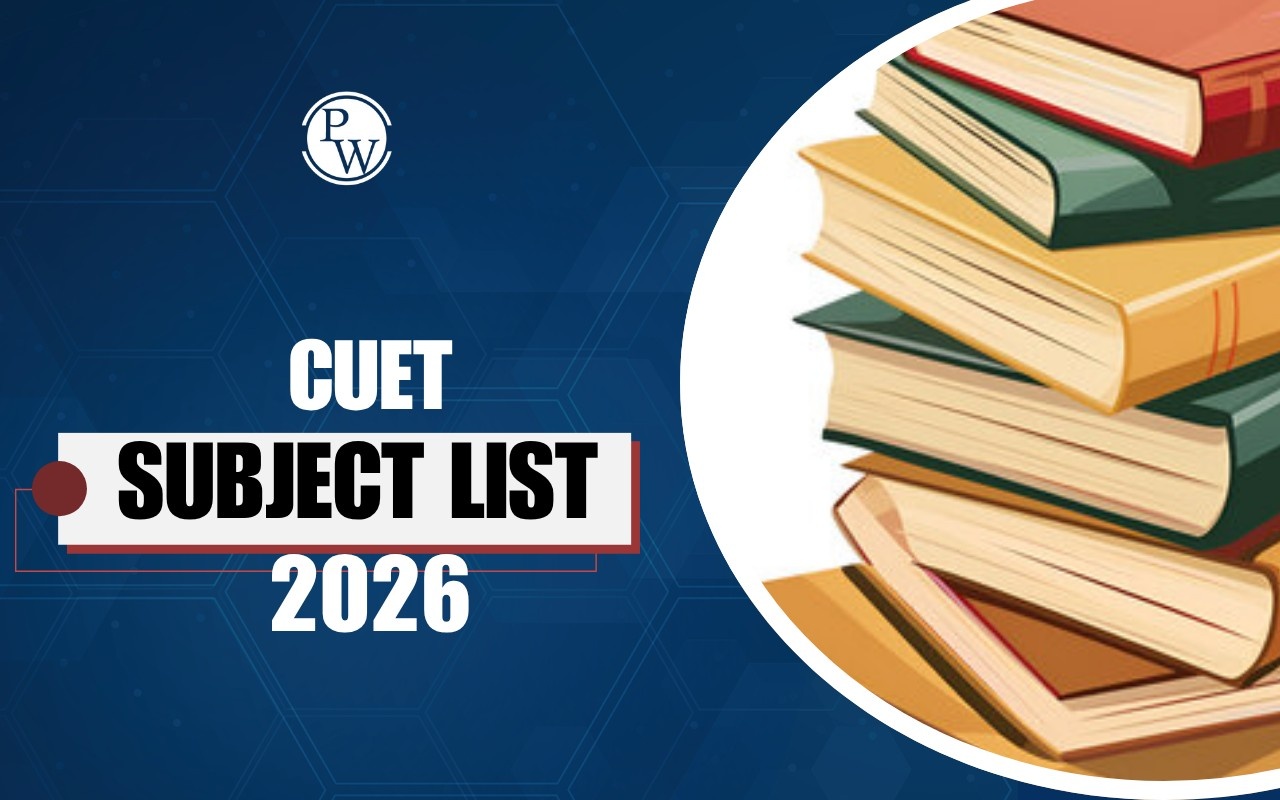

CUET 2025 Chemistry Chapter-Wise Weightage : Candidates who wish to appear in CUET UG 2025 exam with Chemistry as a domain-specific subject must check CUET 2025 Chemistry Chapter-WIse Weightage in this article. Aldehyde, Ketone, and Carboxylic Acid, P-block, Surface Chemistry, Chemical Kinetics, etc have the maximum weightage in CUET 2025 Chemistry Syllabus . NTA will release the official CUET 2025 Chemistry Syllabus in February 2025 on the official website. CUET UG 2025 exam is going to be conducted tentatively in the third week of May 2025.
CUET 2025 Chemistry Chapter-Wise Weightage
Candidates who wish to get admission to the Science courses through CUET UG may have to choose Chemistry as the domain subject. The chapter-wise expected number of questions in the Chemistry syllabus is updated in the table below. Most of the questions in Chemistry are asked from Aldehyde, Ketone, and Carboxylic Acid, P-block, Surface Chemistry, Chemical Kinetics, etc.
| CUET 2025 Chemistry Chapter-Wise Weightage | |
| Chapter Name | Expected Number of Questions |
| Organic Chemistry | |
| Haloalkane and Haloarene | 3-4 |
| Aldehyde, Ketone, and Carboxylic Acid | 4-5 |
| Alcohol, Phenol, and Ether | 3-4 |
| Biomolecules | 2-3 |
| Amine | 3-5 |
| Polymer | 1-2 |
| Chemistry in Everyday Life | 1-2 |
| Inorganic Chemistry | |
| Metallurgy | 1-2 |
| D-block | 2-3 |
| P-block | 4-5 |
| Coordination Compounds | 3-4 |
| Physical Chemistry | |
| Solid State | 2-3 |
| Electrochemistry | 2-3 |
| Solutions | 2-3 |
| Surface Chemistry | 4-5 |
| Chemical Kinetics | 3-4 |
CUET Chemistry Syllabus 2025
The Chemistry syllabus of CUET UG 2025 exam is divided into three sections i.e., Physical Chemistry, Inorganic Chemistry, and Organic Chemistry. Candidates can check the section-wise CUET Chemistry Syllabus in below.
Also Check : CUET 2025 Exam Analysis
CUET Chemistry Syllabus 2025 For Unit I : Solid State
Classification of solids based on different binding forces: molecular, ionic covalent, and metallic solids, amorphous and crystalline solids(elementary idea), unit cell in two-dimensional and three-dimensional lattices, calculation of density of unit cell, packing in solids, packing efficiency, voids, number of atoms per unit cell in a cubic unit cell, point defects, electrical and magnetic properties, Band theory of metals, conductors, semiconductors and insulators and n and p-type semiconductors.
CUET Chemistry Syllabus 2025 For Unit II: Solutions
Types of solutions, expression of concentration of solutions of solids in liquids, the solubility of gases in liquids, solid solutions, colligative properties – the relative lowering of vapour pressure, Raoult’s law, elevation of B.P., depression of freezing point, osmotic pressure, determination of molecular masses using colligative properties, abnormal molecular mass, Vant Hoff factor.
CUET Chemistry Syllabus 2025 For Unit III: Electrochemistry
Redox reactions; conductance in electrolytic solutions, specific and molar conductivity variations of conductivity with concentration, Kohlrausch’s Law, electrolysis and laws of electrolysis (elementary idea), dry cell – electrolytic cells and Galvanic cells; lead accumulator, EMF of a cell, standard electrode potential, Nernst equation and its application to chemical cells. Relation between Gibbs energy change and EMF of a cell, fuel cells; corrosion.
CUET Chemistry Syllabus 2025 For Unit IV: Chemical Kinetics
Rate of a reaction (average and instantaneous), factors affecting rates of reaction: concentration, temperature, catalyst; order and molecularity of a reaction; rate law and specific rate constant, integrated rate equations, and half-life (only for zero and first-order reactions); concept of collision theory (elementary idea, no mathematical treatment). Activation energy, Arrhenius equation.
CUET Chemistry Syllabus 2025 For Unit V : Surface Chemistry
Adsorption – physisorption and chemisorption; factors affecting adsorption of gases on solids; catalysis: homogenous and heterogeneous, activity and selectivity: enzyme catalysis; colloidal state: the distinction between true solutions, colloids, and suspensions; lyophilic, lyophobic multimolecular and macromolecular colloids; properties of colloids; Tyndall effect, Brownian movement, electrophoresis, coagulation; emulsions – types of emulsions.
CUET Chemistry Syllabus 2025 For Unit VI : General Principles And Processes of Isolation of Elements
Principles and methods of extraction – concentration, oxidation, reduction electrolytic method, and refining; occurrence and principles of extraction of aluminium, copper, zinc, and iron.
CUET Chemistry Syllabus 2025 For Unit VII: p-Block Elements
- Group 15 elements : General introduction, electronic configuration, occurrence, oxidation states, trends in physical and chemical properties; nitrogen – preparation, properties, and uses; compounds of nitrogen: preparation and properties of ammonia and nitric acid, oxides of nitrogen (structure only); Phosphorous-allotropic forms; compounds of phosphorous: preparation and properties of phosphine, halides (PCl3, PCl5) and oxoacids (elementary idea only).
- Group 16 elements : General introduction, electronic configuration, oxidation states, occurrence, trends in physical and chemical properties; dioxygen: preparation, properties, and uses; classification of oxides; ozone. Sulphur – allotropic forms; compounds of sulphur: preparation, properties, and uses of sulphur dioxide; sulphuric acid: industrial process of manufacture, properties and uses, oxoacids of sulphur (structures only).
- Group 17 elements : General introduction, electronic configuration, oxidation states, occurrence, trends in physical and chemical properties; compounds of halogens: preparation, properties and uses of chlorine and hydrochloric acid, interhalogen compounds, oxoacids of halogens(structures only).
- Group 18 elements : General introduction, electronic configuration, occurrence, trends in physical and chemical properties, uses.
CUET Chemistry Syllabus 2025 For Unit VIII: d and f Block Elements
- General introduction, electronic configuration, occurrence and characteristics of transition metals, general trends in properties of the first-row transition metals – metallic character, ionization enthalpy, oxidation states, ionic radii, colour, catalytic property, magnetic properties, interstitial compounds, alloy formation. Preparation and properties of K2Cr2O7 and KMnO4.
- Lanthanoids – electronic configuration, oxidation states, chemical reactivity, and lanthanoid contraction and its consequences.
- Actinoids –Electronic configuration, oxidation states, and comparison with lanthanoids.
CUET Chemistry Syllabus 2025 For Unit IX: Coordination Compounds
Coordination compounds: Introduction, ligands, coordination number, colour, magnetic properties and shapes, IUPAC nomenclature of mononuclear coordination compounds, bonding, Werner’s theory VBT, CFT; isomerism (structural and stereo)importance of coordination compounds (in qualitative analysis, extraction of metals and biological systems).
CUET Chemistry Syllabus 2025 For Unit X: Haloalkanes and Haloarenes
- Haloalkanes: Nomenclature, nature of C-Xbond, physical and chemical properties, mechanism of substitution reactions. Optical rotation.
- Haloarenes: Nature of C-X bond, substitution reactions (directive influence of halogen for monosubstituted compounds only).
- Uses and environmental effects of–dichloromethane, trichloromethane, tetrachloromethane, iodoform, freons, DDT.
CUET Chemistry Syllabus 2025 For Unit XI: Alcohols, Phenols, and Ethers
- Alcohols: Nomenclature, methods of preparation, physical and chemical properties (of primary alcohols only); identification of primary, secondary, and tertiary alcohols; mechanism of dehydration, uses, with special reference to methanol and ethanol.
- Phenols: Nomenclature, methods of preparation, physical and chemical properties, acidic nature of phenol, electrophilic substitution reactions, uses of phenols.
- Ethers: Nomenclature, methods of preparation, physical and chemical properties, uses.
CUET Chemistry Syllabus 2025 For Unit XII: Aldehydes, Ketones, and Carboxylic Acid
- Aldehydes and Ketones: Nomenclature, nature of carbonyl group, methods of preparation, physical and chemical properties, mechanism of nucleophilic addition, the reactivity of alpha hydrogen in aldehydes; uses.
- Carboxylic Acids: Nomenclature, acidic nature, methods of preparation, physical and chemical properties; uses.
CUET Chemistry Syllabus 2025 For Unit XIII: Organic Compounds Containing Nitrogen
- Amines: Nomenclature, classification, structure, methods of preparation, physical and chemical properties, uses, identification of primary secondary, and tertiary amines.
- Cyanides and Isocyanides – will be mentioned at relevant places in context.
- Diazonium salts: Preparation, chemical reactions, and importance in synthetic organic chemistry
CUET Chemistry Syllabus 2025 For Unit XIV: Biomolecules
- Carbohydrates – Classification (aldoses and ketoses), monosaccharide (glucose and fructose), D-L configuration, oligosaccharides (sucrose, lactose, maltose), polysaccharides (starch, cellulose, glycogen): importance.
- Proteins – Elementary idea of a-amino acids, peptide bond, polypeptides, proteins, primary structure, secondary structure, tertiary structure and quaternary structure (qualitative idea only), denaturation of proteins; enzymes.
- Hormones –Elementary idea (excluding structure).
- Vitamins – Classification and functions.
- Nucleic Acids: DNA and RNA
CUET Chemistry Syllabus 2025 For Unit XV: Polymers
Classification – Natural and synthetic, methods of polymerization (addition and condensation), copolymerization. Some important polymers: natural and synthetic like polythene, nylon, polyesters, bakelite, rubber. Biodegradable and non-biodegradable polymers.
CUET Chemistry Syllabus 2025 For Unit XVI: Chemistry in Everyday Life
- Chemicals in medicines – analgesics, tranquilizers, antiseptics, disinfectants, antimicrobials, antifertility drugs, antibiotics, antacids, antihistamines.
- Chemicals in food– preservatives, artificial sweetening agents, elementary idea of antioxidants.
- Cleansing agents – soaps and detergents, cleansing action.
CUET Chemistry Exam Pattern 2025
Candidates will be asked 50 questions from CUET Chemistry syllabus, out of them 40 questions need to be answered. The questions will be multiple-choice type questions. Candidates can check CUET Chemistry Exam Pattern 2025 in the table below.
| CUET Chemistry Exam Pattern 2025 | |
| Features | Details |
| Number of questions | 50 |
| Number of questions to be attempted | 40 |
| Type of questions | Multiple Choice Question (MCQ) |
| CUET Chemistry exam duration | 60 minutes |
| CUET marking scheme | +5 for each correct answer -1 for each incorrect answer |
Important Preparation Tips For CUET Chemistry
Candidates who are preparing for CUET UG exam with Chemistry as a domain-specific subject must follow the below preparation tips.
- Master Key Concepts: Focus on fundamental concepts in physical, organic, and inorganic chemistry. Understand topics like stoichiometry, chemical bonding, and periodic trends.
- Practice Numerical Problems: For physical chemistry, practice solving numerical problems related to thermodynamics, equilibrium, and kinetics. Get comfortable with calculations.
- Review Reaction Mechanisms : In organic chemistry, make sure to understand common reaction mechanisms and their steps. Creating tables or charts can help organize information.
- Utilize Flashcards: Create flashcards for important reactions, definitions, and terms. This is especially helpful for memorizing functional groups and nomenclature in organic chemistry.
- Focus on Lab Techniques: Understand key laboratory techniques and their applications, as practical knowledge can be beneficial for theoretical questions.
- Study from NCERT Textbooks: NCERT books are often aligned with exam patterns. Use them for foundational knowledge and clarity on core concepts.
- Periodic Table Proficiency: Get familiar with the periodic table's trends, such as electronegativity, ionization energy, and atomic radius. Quick recall of elements can save time during the exam.
- Regular Revision and Practice Tests: Schedule periodic revision sessions and take practice tests under timed conditions to simulate the exam environment.
CUET 2025 Chemistry Chapter-Wise Weightage FAQs
Q.1 : What is the syllabus of CUET Chemistry 2025?
Q.2 : Which topics have the highest weightage in CUET Chemistry Syllabus?
Q.3 : How many questions will be asked from CUET Chemistry?
Q.4 : What is CUET UG 2025 exam date?












